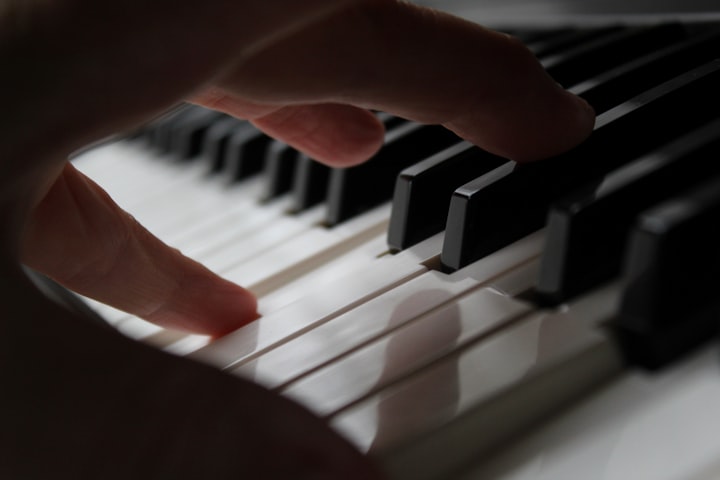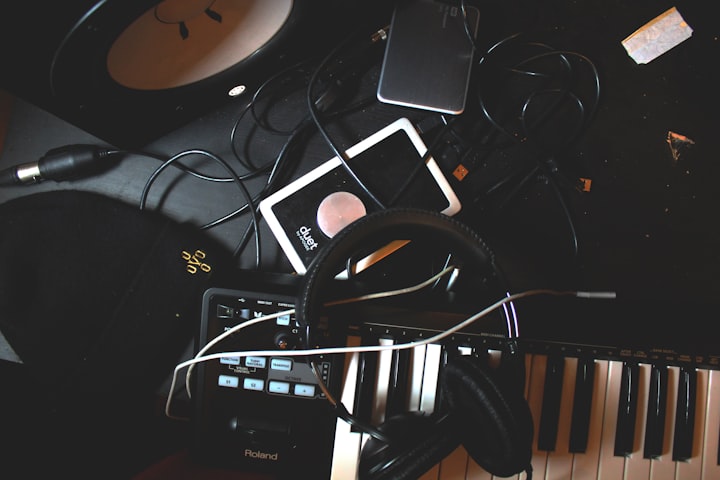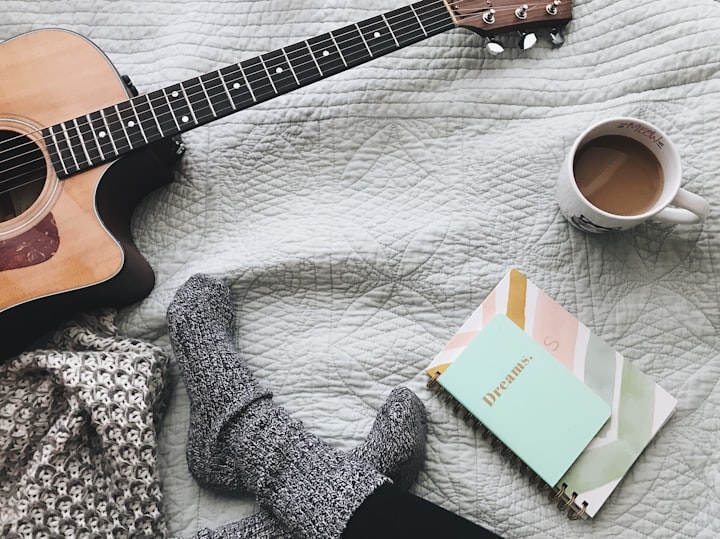
As a bass player, bandleader, teacher and copywriter, I have worked with a huge number of singers for a long time. However, acting musicians know a lot of tunes, singers need to have great charts in order for their music to play the way they want. I define a "good chart" as a piece of new music created that effectively tells the musicians what they should be playing.
Written melodies come in seven standard types: chord charts, melody sheets, songbooks, direct sheets, imaginary publications, study rhythm maps, and fully recorded components.
In order for a musician to be required to participate in the chart immediately before them, the chart provider must provide a proper chart. It is very important to understand which type of chart to use for which tune or gig.
This article explains what unique chart styles are and when to apply them. I hope you find it practical.
Types of CHARTS
Charts can be simple or complex depending on the model of the songs and the kind of concert. Include melodies are traditionally extracted from recordings; classical and choral new music can be found both in music shops and in various catalogs of tunes; many melodies can be found in various musical textbooks; and several general public libraries have recordings and music prepared for your use.
The word "diagram" refers to any section of a recorded melody or any arrangement (music created using a one-of-a-kind method) of a melody. Many years ago it was strictly "cool" slang for a melody, but more recently, any part of a melody may be known as a diagram, while classical music lovers may not refer to a Mozart piece for "diagram".
Understanding which chart to use for which tune is essential. When you're actively playing in a gig and someone hands you a chart, it's really what it is, and you either study it carefully or you don't. But whether you're purchasing charts, designing them for your use case, or offering them yourself, you need to know which views to use for which circumstances. Decades again, performing singing performances, singers hit myriad charts: fantastic, bad, wrong, inappropriate, and it was a real pain. Singers who submitted proper chart forms received their tunes played exactly the way they preferred. The singers who encountered irregular chart shapes didn't and weren't very happy about it. If the musician does not already know the specific components, he can only participate according to what is in the table in front of him. Even though an excellent musician can improvise most of any pattern, if the chosen musical line is to be played, it really must be written down.
Since the musician is responsible for the correct use of the diagram in front of him, it is the responsibility of the supplier of the diagram to provide only one appropriate.
Without going into the details of musical notation of melodies, this article introduces the different types of charts and their uses:
1. CHORD CHARTS
The chord table includes chords, meter (how the song is counted, e.g. in fours or threes (similar to a waltz), as well as in-song sorting (the exact order of your sections). It is mainly used when: 1. precise pieces of music are improvised or are currently known, although the type and chords need to be specified, 2. to add chords for the improvisation described above, or 3. when it is really necessary to chart at the last minute and there is no time for something more detailed.
The chord chart will not consist of a melody or any of the specific instrumental elements normally played. To work with simple chord charts, the musician must have accurate timing, know the chords, and improvise his part no matter what the melody sounds like.
2. SHEET Melodies
Sheet tunes are actually a store-bought model of a melody printed by a publisher that consists of an instrumental section, chords, lyrics, melody, and shape. In the instrumental part, obviously, there will be only songs. The notes of the songs are prepared for two pianos and a guitar. Guitar sheet music in typical notation (usually classical) as well as in tabs. A great music record will usually sound good whether it's for piano or guitar. Most audio files are not really meant to be fully representative of the actual recording, and the exact arrangement you hear on the recording is rarely the actual one.
Many people have experienced frustration when they get the sheet music for your favorite song, participate in it, and find out that the chords are unique from your recording, and sometimes the shape. Unfortunately, this is so much, and it may be due to your number of different explanations. In order to get accurate arrangements and chords, you would like to "break down" your melody: understand it by ear. Deletion is every time you hear a piece of new music and compose it. Breakdowns can range from simple chord diagrams to complex orchestral components, or everything in between. In order to do good disassembly, you need to have an excellent ear, fully understand musical notation and be flexible in your complexity, the style of the new music you are working with, and preferably sound recognition (the more the better). ). Having "good hearing" consists of recognizing and understanding tunes, whether they're on the radio, played by another musician, or in your head.
3. SONG COLLECTIONS
Songbooks are collections of numerous tunes and often contain exactly the same information as the tunes on the sheets, along with chords and arrangements that differ from the recording most of the time. Sheet songs usually have full intros and endings, while songbook tunes are often shortened to make room inside the e-book for additional tunes. Sheet music is mostly prepared for playing on the keyboard, but songbooks come in different styles and for different instruments. They are compiled by artist, design, ten years, as well as several collections, including movie themes, Broadway hits and so on.
Songbooks are undoubtedly the best reference source when other, more correct charts are not available. For example: I need two themes for a movie to get a concert at the time (client requests). Instead of spending $8 on 2 tunes with sheet music, I bought a $16 movie theme reserve that contained about a hundred tunes. Sheet music and songbooks are completely unsuitable for live use due to cumbersome web page flips and bulkiness; but in times of crisis you use them and do what you can. If it is possible to work with sheet music or songbooks for general performance, either: one. copy the melody to 1-3 web pages or two. copy it and glue the pages together (although, strictly speaking, this could be considered a copyright infringement). You should definitely always give a cue to each musician.
To practice from songbooks and sheet music, a musician must be able to read music notation, or at least improvise a part in chordal symbols, such as a guitar thump, bass groove, piano groove, etc., or much better. yet equally. The vocalist can sing the lyrics if he knows the melody, or have time to study the recorded melody if he does not know it.

4. Lead SHEETS
Reference sheets include chords, words, and melody with melody, and are primarily used by singers, accompanists, and arrangers, although they appear on the stage from time to time. Songwriters use lead lists to copyright their music, and it's very common for a song to have a lead list of your melody in the sheet music, which is a condensed model to use. Instead of acquiring three to six web pages of sheet music to flip through, the lead sheet often spans multiple web pages. Music sheets never contain any new notation other than the melody and chords, so the musician must be able to improvise when reading from one sheet. The lead sheet is usually written by a melody copier who handles the scheduling of the published audio. Enjoying solos requires a minimum of participation in the accompaniment of your chords and an understanding of the form and symbol instructions (marks telling you to visit the verse or chorus, maybe the conclusion, etc.), as well as the maximum experience of accompaniment and watching to record smoothly.
5. Pretend to be books
The fake e-book is actually a large e-book with melodies, consisting only of the melody, lyrics, and chords. There is no piano section, no guitar element, no bass element. That's why they contact him as a pretend reserve. You should know your elements beforehand or improvise them according to the design and style of your tune. A number of people associate it with "pretending". Faking means being musically trained enough to be able to follow by ear and identify it as you go: this is one of your ear training factors. Every time a person's ear is "trained", he learns to identify and understand the relationship between pitch and musical components. Using this understanding, you can "hear" your way through the melodies, whether you've heard them beforehand or not, you're faking it. On the other hand, whenever you never listen so properly, you are definitely faking it!
Before there were many legal fake publications in the sector, there were many illegal fake textbooks about the streets. (At the time of writing, I've only witnessed a few in concert.) Because it's necessary for a performing musician to have access to a huge amount of tunes in concert, musicians have compiled publications of numerous handy tunes that contain only melodies and chords. A working member does not need to publish all the sheet music simply because he can improvise, so large manuals with selected tunes have been developed. Some bogus manuals are copied by hand, either by a professional copyist, or carelessly finalized with a pen or pencil, while some consist of abbreviated notes with all parts of the piano removed, leaving the melody and chords, all with the function of a condensation zone.
As an alternative to just taking stacks of songbooks with you to gigs, you pack a fake e-book full of popular tunes in your bag and leave. A melody occupying 5 or 6 web pages in a songbook/sheet audio variety usually occupies a web site or significantly less when transcribed by hand or shortened to only the chords and melody. Fake guides tend to be used and I've rarely been to a relaxed place where the other person didn't have at least one.
The reason illegal textbooks are illegal is because of copyright rules. When using homemade editions from publishers who own the rights, nothing is spent on melodies at all, so neither publishers nor composers receive commissions for using them. The catch-22 over the past few years has been that there have been no good authorized textbooks for professional musicians to use in concert. In a songbook of 200 melodies, ten can be used. So, gamers built their own unique one, and concert musicians lived happily ever after shortly after. But given that the production of these books is illegal, several decades ago a number of nationwide distributors were arrested and fined for copyright infringement. However, you are already starting to see illegal books about variety art.
Quite a few legitimate fake textbooks have already been identified over the years, and they are great. You'll find music guides for pop, jazz, rock, state, various artists and movie themes, as well as special marriage textbooks with all the important music that brides love. Significant sales outlets of music tunes should have all of them. And recently, some of the most popular illegal counterfeit books have been released legally. (Hooray!) The 5th edition of the Authentic Ebook is certainly a case in point. Filled with mostly jazz tunes, the e-book is in a unique format but is legally presented as the sixth version of a serious e-book.
Legal fake editions are plentiful from music sellers, and illegal editions ... in fact, you are in your own. Trade magazines and song union newspapers often advertise a wide range of new music manuals, as well as joke books, ethnic music, and other such leisure merchandise. In some cases, tool stores have fake publications at the same time.
Fake textbooks are good, but the more tunes a musician knows, the higher.
6. Study the RHYTHM CHARTS
Learn Rhythm Charts - These are charts suitable for the rhythm area (piano, bass, guitar, and drums). This is one table that contains a general plan for all participants: a draft of a melody, a study copy of all this for each participant. These charts are like intricate chord charts with just enough detail to create the music, perhaps an experience and sound more like an authentic recording, or to offer just enough detail to make it eye-catching and recognizable, leaving the rest up to improvisation.
Unless, of course, the melody is composed or arranged in this type from the start, and many are, these diagrams are created by someone doing the deletion from the recording, or developed from straight sheets or songbooks. While the straight sheets are usually for that singer, the main rhythm charts are mostly for those musicians. Whenever a singer gives charts to musicians while in a band, they are standard types that can be used.
The master rhythm chart has:
• All chords
• Critical rhythms (leading rhythms)
• Important melodic components with instruments
• Vital texts for reference if needed
• Decisive backing vocals, if present
• Dynamics - how loud, how quiet and many more.
• Any options that explain the guidelines and symbols needed to ensure the excellent functionality of your melody.
All kinds of preferred new music use the main rhythm charts, and usually along with someone who has a solo sheet for every tune, whenever a singer is involved. Learning to read and create a rhythm chart involves fluid improvisation during style with melody and requires fluid notation with skill in mind.
7. INDICATED COMPONENTS
If the new music is to be exceptionally authentic, it can be recorded in its entirety. Everything that needs to be done is prepared on the spot. What to participate in, when to play and how to play: notes, rhythms, dynamics and any musical expressions such as tempos (how fast or slow), who pitches what and so on. Most dedicated recording sessions and displays should provide smooth note reading and private areas for each instrument.
LYRICAL SHEETS WITH CHORDS
Although not released on audio, the lyric sheets with chords deserve a mention.
Singers playing the instrument usually use lyric sheets with chord notation written in the previously mentioned words. To get a singer/musician they are very useful and commonly used. I have used them myself.
On the other hand, musicians reading these charts may perform well when they are well versed in music, but this leaves an extremely large margin for error. Quite often the chords are over the wrong words and phrases, or even the chords are wrong or incomplete: a very risky company. Musicians love specifics.
My students use them every time and there are tons of websites with hundreds of lyrics sheets for you to download. For specific conditions, they are very useful!
Technology!
Along with the availability of smartphones, tablets and very similar equipment, it is often possible to find a musician with all their music scanned into the device! Although this is by no means a substitute for paper, it is definitely convenient! A solo pianist can leave a suitcase full of songs at your home, a jazz member can download True Book 6th Edition on their smartphone, and a singer can get the latest lyrics online from the stage.
Engineering is great!
Conclusion
As a musician, he is responsible for the correct execution of the schedule in front of him, the supplier in the schedule is obliged to provide the proper schedule. It is very important to know which chart to use for which tune or concert.
Introduce your musicians using a suitable chart and chances are your music will sound the way you want it to. The closer you stick to this principle, the better your performances will be.
Thank you So much for you to reading till the end, and please kindly to support me as you could, I would be appreciate it. Have a great day:D
About the Creator
Eful
Hi there, I am Syaefullah Nur from Indonesia. I am reader and now I try to providing my best articles for you guys. Enjoy it;)






Comments
There are no comments for this story
Be the first to respond and start the conversation.